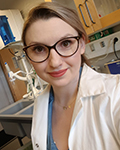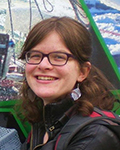
Most of Earth's biodiversity is invisible to the naked eye. And most of this invisible, microscopic world is composed of single-celled organisms, or microbes. Despite their small size, microbes are the engines that drive Earth's ecosystems. A pinch of soil or a drop of water can contain millions of microbes.
The goal of the myDiatoms project is to introduce students, naturalists, and anyone else interested in biodiversity to diatoms, a lineage of microbes found in virtually all aquatic habitats—from ponds and lakes, trickling books and large rivers, to coastal and open ocean waters.
Diatoms are microscopic algae, which means that, like plants, they use sunlight and air to make their own food and, in doing so, release oxygen into the atmosphere. This process is called photosynthesis, and incredibly, photosynthesis by diatoms produces almost 25% of the air we breathe. That's one in every four breaths! Diatoms form the base of marine and freshwater food webs where their photosynthetic products—sugars and oils—make their way up the food chain into animals like fish and whales.
Probably the most interesting feature of diatoms is that they're made of glass. Their cells are encased by a glass wall called a frustule. People have been admiring the beautiful and highly ornamented frustules of diatoms for centuries, and the goal of the myDiatoms project is to give you a chance to learn about and admire the diatoms in your own local water body, too.
Diatoms come in a variety of shapes and sizes. Some diatoms are circular, some are elliptical, and some are shaped liked pencils! The different shapes of diatoms is one way that scientists can tell them apart.
Another way that scientists can distinguish between them is by their size. They range in size from 2 microns to 500 microns. That's really tiny! For example, 10 of the biggest diatoms can fit inside a single pea.





The Alverson Lab is housed in the Department of Biological Sciences at the University of Arkansas. The lab is comprised of Dr. Andrew Alverson and a dedicated group of scientists from across the world who carry out research projects aimed at understanding the evolution of diatom diversity in all its many forms.
To do this, we use genetic data to build the family tree of diatoms, then use that family tree (or "phylogeny") to ask questions such as: How old are diatoms? How many times have diatoms moved from the salty oceans, where they originated, into freshwaters? What genetic changes allowed diatoms to adapt to different environments? Our research involves collecting diatoms in nature, performing experiments in the lab, and sequencing their genomes. We then use a combination of math, statistics, and computer programming to get the answers to these questions. More information is available on the Alverson Lab website.